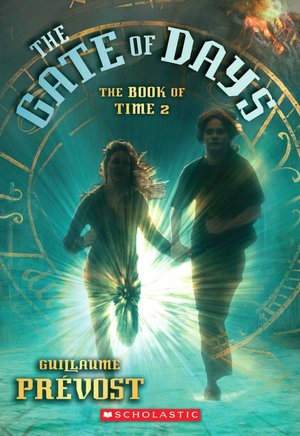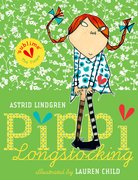Come and find me at a discount ticket to everywhere in its new home!
Image courtesy of FreeDigitalPhotos.net
Mary Schmich's description of reading struck home with me, and it seems especially apt for translated fiction. Here are some of my musings on what I'm reading, re-reading, reading to my children, and translating.
Image courtesy of FreeDigitalPhotos.net
 |
| Richard Rogerson [CC-BY-SA-2.0], via Wikimedia Commons |
 |
| Norwich skyline from Mousehold Heath |
"On a more personal note, I can vouch for the fact that Norwich is a good place for writers. (...) [T]here's also a thriving community of writers and journalists living here. When I made the move, I thought I was a pioneer, but it turns out I was just enacting a cliche. Half my neighbours seem to have a novel in the pipeline, a newspaper column, a job in publishing, an eccentric authorial uncle ..."Clearly he lives in the Golden Triangle - I can't imagine quite so many writers in our neck of the woods.
 |
"One cup for Mu-u-u-mmy... One cup for Da-a-a-ddy..."

 |
| Saint-Exupéry with the wreckage of his plane in the Sahara |
 |
| Ted van Lieshout |
 I was a little confused as to why it was set in the seventies when it was written in the nineties, but apparently it is semi-autobiographical and based on van Lieshout and his own brother (or one of them - he is one of eleven).
I was a little confused as to why it was set in the seventies when it was written in the nineties, but apparently it is semi-autobiographical and based on van Lieshout and his own brother (or one of them - he is one of eleven)."Van Lieshout uses the abbreviation to indicate a breach in the relationship between two brothers and the premature end of a young life."All the same, even without that little subtlety, it's a poignant and gripping story by a writer unafraid of taking risks and tackling some big ideas. The "scenes of a sexual nature" make it one for older teens, with the publishers pitching it at 15+.

 I was very flattered to be nominated for a Beautiful Blogger Award by Suzanne at The Tales of Missus P - thank you!
I was very flattered to be nominated for a Beautiful Blogger Award by Suzanne at The Tales of Missus P - thank you! |
| Yes, I'd rather be there than here today! Image: FreeDigitalPhotos.net |
- "That's a bit like being a child prodigy, but also like the opposite. I think an awful lot, but I need a lot of time to figure things out." -who lives in Berlin with his mum. He has trouble telling the difference between left and right, and gets all kinds of things mixed up, yet he also notices a lot that other people don't see. He becomes friends with Oscar, who is a child prodigy but also prone to anxiety. Together they manage to solve the mystery of what exactly is going on in Rico's building, the "Aldi Kidnapper" or "Mr 2000", and the significance of the "deeper shadows".
 Of course, it's always possible for adults to start over-analysing these things - has the rainbow fish truly changed or is he just buying fair-weather friends? What is the role of the mysterious octopus anyway? Isn't it convenient that he knows just the right number of fish to give away all but one of his scales?
Of course, it's always possible for adults to start over-analysing these things - has the rainbow fish truly changed or is he just buying fair-weather friends? What is the role of the mysterious octopus anyway? Isn't it convenient that he knows just the right number of fish to give away all but one of his scales?"the most insipid, disgusting and subversive children's book available today."(Which makes me think it must be doing something right...) Here is a rather more balanced critique from Eric Steinman:
"Where this book could easily be teaching honest lessons about the value of communication and sharing, it teaches flawed lessons about being liked and losing yourself to mass popularity." Read more: http://www.care2.com/greenliving/lit-crit-the-rainbow-fish.html#ixzz1vATyotMjand a positive view from Anna M. Ligtenberg:
"The message in this book is more about not letting your possessions possess you, about understanding that others won't like you just because you're pretty, and about recognizing that friendship isn't about someone else adoring you but about sharing something, even if all you share is play time (not necessarily possessions)." Source: http://www.amazon.com/Oh, and if you were wondering whether the debate is due to anything being lost in translation, I can assure you that the reviews on amazon.de are equally polarised.
"Rainbow Fish has no political message. The story only wants to show us the joy of sharing. We all enjoy making presents for Holidays or birthdays and the warm feeling it gives us when we do so. I want to show children the positive aspect of sharing: To share does not only mean to give away something (what is quite hard for a child), but above all to make someone else happy– and themselves happy by doing it." Source: http://www.marcuspfister.ch/evolution.htmPersonally, I think that most of this fuss comes down to simply reading too much into it. Clearly, Pfister could have made his point in a less clumsy way and avoided such a whirl of controversy, but I also think that children are more likely to understand the book the way it's meant than adults...
 When we first meet Sam in his small Québec hometown in The Book of Time, he’s sure that the junior high bully is going to beat him up. By the end of this compelling young adult trilogy, Sam has become stronger in many ways – as a friend to his cousin Lucy, as a quick thinker and problem solver, as a person who can resist the temptations of easy illegal riches, and as a young man who knows that the perils of going into high school are nothing compared to what he’s faced during his time travels.
When we first meet Sam in his small Québec hometown in The Book of Time, he’s sure that the junior high bully is going to beat him up. By the end of this compelling young adult trilogy, Sam has become stronger in many ways – as a friend to his cousin Lucy, as a quick thinker and problem solver, as a person who can resist the temptations of easy illegal riches, and as a young man who knows that the perils of going into high school are nothing compared to what he’s faced during his time travels. Series author Guillaume Prévost is a history professor in France and has also written novels for adults – all in French. In a 2007 interview, he stated how much he enjoyed having William Rodarmor translate all three books in The Book of Time series, as Rodarmor frequently consulted him to clarify historical points and plot nuances. When his adult novels were translated, Prévost had very little involvement with the process.
Series author Guillaume Prévost is a history professor in France and has also written novels for adults – all in French. In a 2007 interview, he stated how much he enjoyed having William Rodarmor translate all three books in The Book of Time series, as Rodarmor frequently consulted him to clarify historical points and plot nuances. When his adult novels were translated, Prévost had very little involvement with the process. The Book of Time (#1) introduces Sam, his recently bereaved father, and their shared gift of traveling through time using the sunstone and special coins.
The Book of Time (#1) introduces Sam, his recently bereaved father, and their shared gift of traveling through time using the sunstone and special coins. You’ll have to read The Book of Time series to find out!
You’ll have to read The Book of Time series to find out! "There was an old woman who went to bed at night as old women usually do, and in the morning she woke up as old women usually do. But on this particular morning she found herself shrunk to the size of a pepperpot, and old women don't usually do that. The odd thing was, her name really was Mrs Pepperpot."
 |
"the organisation dedicated to promoting and exploring world literature and children's books in translation."I have found this website of enormous help in compiling and researching this A-Z, and the nice people there provide all kinds of ways to discover new books. You can search for a specific author or title, browse by age range or choose a country from an interactive map of the world. Or you can have a look at their book of the week. Not all the books are translations, incidentally - some are written in English by international authors.
|
|
|
 |
| Oscar and the Very Hungry Dragon |
 |
| Walk of Fame, Rotterdam. Photo by Ziko van Dijk |

 |
| German stamp from 2007 showing Astrid Lindgren and Emil |
 Adding to the fun of the Pippi books is the way she plays with language, inventing and mispronouncing words and names, singing nonsense songs, telling jokes and making up riddles. Obviously, this sets her translators a particularly tricky challenge! In the US Pippi Longstocking was translated in 1950 by Florence Lamborn, while it was translated in the UK by Edna Hurup in 1954 and published by Oxford University Press. Meanwhile, Pippi Goes Aboard (1956) and Pippi in the South Seas (1957) were translated by Marianne Turner. For a detailed comparison of these US and UK versions, see here: Pippi Goes Abroad by Madelene Moats.
Adding to the fun of the Pippi books is the way she plays with language, inventing and mispronouncing words and names, singing nonsense songs, telling jokes and making up riddles. Obviously, this sets her translators a particularly tricky challenge! In the US Pippi Longstocking was translated in 1950 by Florence Lamborn, while it was translated in the UK by Edna Hurup in 1954 and published by Oxford University Press. Meanwhile, Pippi Goes Aboard (1956) and Pippi in the South Seas (1957) were translated by Marianne Turner. For a detailed comparison of these US and UK versions, see here: Pippi Goes Abroad by Madelene Moats. I read the newest translation by Tiina Nunnally (also OUP), published in 2007 and illustrated by Lauren Child of Charlie and Lola fame. Nunnally's translation is described as "sparkling" by the publishers and it certainly reads well. Combined with Child's illustrations it brings a modern air to the book - there are a lot of typographical quirks strongly reminiscent of the Charlie and Lola books. Judging by the examples in the essay I linked to above, it seems closer to the Lamborn translation than the Hurup - perhaps unsurprisingly as Nunnally is also American. She has a deft touch with the word play too - just to use one of the examples quoted by Moats, Pippi makes up a little rhyming ditty as she cooks pancakes for her friends.
I read the newest translation by Tiina Nunnally (also OUP), published in 2007 and illustrated by Lauren Child of Charlie and Lola fame. Nunnally's translation is described as "sparkling" by the publishers and it certainly reads well. Combined with Child's illustrations it brings a modern air to the book - there are a lot of typographical quirks strongly reminiscent of the Charlie and Lola books. Judging by the examples in the essay I linked to above, it seems closer to the Lamborn translation than the Hurup - perhaps unsurprisingly as Nunnally is also American. She has a deft touch with the word play too - just to use one of the examples quoted by Moats, Pippi makes up a little rhyming ditty as she cooks pancakes for her friends.Nu ska här bakas pannekakas,Hurup's version completely ignores the rhyme and the nonsense:
nu ska här vankas pannekankas,
nu ska här stekas pannekekas. (1945:14)
Here pancakes will be baked now,Lamborn has:
here pancakes will be served now,
here pancakes will be fried now! (1954: 9)
Now we’re going to make a pancake,We can now bring the comparison up to date by adding Nunnally's version:
now there’s going to be a pankee,
now we’re going to fry a pankye. (1977: 20)
Now it's time to make pancakes,To me, the last of these is the punchiest - Lamborn's is OK but doesn't scan so well.
now it's time to flip panclips,
now it's time to shape panchapes! (2007: 20)
 To get a taste of her writing for this A-Z project, I read Kaaberbøl's Silverhorse. The publishers, MacMillan Children's Books, have let this and the sequel Midnight go out of print, which is a shame because it's an excellent book. It is set in a post-apocalyptic world where nobody is allowed to own the land, but it is passed down from mother to daughter. Women are the rulers with a duty to care for the land, and men lead an itinerant life. The main character is 12-year-old Kat, daughter of Tess, the maestra of Crowfoot Inn. Kat has a fiery temper and fights constantly with her stepfather. In the end, Tess has no choice but to send Kat away, despite it being very unusual for a girl to travel in this society. After a disastrous apprenticeship to a dyer, she ends up at the academy for Bredinari, who ride the strange and dangerous hellhorses - wild nightmares crossed with sturdy mountain horses - and serve justice and law in the land of Breda. Here, Kat has to learn to control her temper so she can master the weapons and horses she will need to handle. Events come to a head when she gets caught up in power politics beyond her control or understanding, and finds herself fighting for survival.
To get a taste of her writing for this A-Z project, I read Kaaberbøl's Silverhorse. The publishers, MacMillan Children's Books, have let this and the sequel Midnight go out of print, which is a shame because it's an excellent book. It is set in a post-apocalyptic world where nobody is allowed to own the land, but it is passed down from mother to daughter. Women are the rulers with a duty to care for the land, and men lead an itinerant life. The main character is 12-year-old Kat, daughter of Tess, the maestra of Crowfoot Inn. Kat has a fiery temper and fights constantly with her stepfather. In the end, Tess has no choice but to send Kat away, despite it being very unusual for a girl to travel in this society. After a disastrous apprenticeship to a dyer, she ends up at the academy for Bredinari, who ride the strange and dangerous hellhorses - wild nightmares crossed with sturdy mountain horses - and serve justice and law in the land of Breda. Here, Kat has to learn to control her temper so she can master the weapons and horses she will need to handle. Events come to a head when she gets caught up in power politics beyond her control or understanding, and finds herself fighting for survival."I'm number 1. Feed me when I'm hungry."The penguins keep coming; they're cute at first but soon start to cause problems. How do you house them, feed them, clean them? And who's sending them? And why?! Along the way, the family find themselves solving various mathematical problems in attempt to calculate their food requirements and storage solutions. By 31 December, their house is full of, you've guessed it, 365 penguins! One of them, named Chilly, has cute little blue feet. While they hold their New Year's Eve party on the lawn the sender of the penguins turns up.

 |
| The cast of The Adventures of Tintin |
